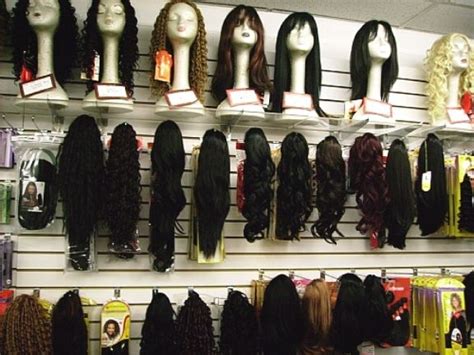The precise time that a hair store opens may vary depending on the specific store’s location, operating hours, and any special circumstances. However, here is a general overview of typical opening times for hair stores:

Weekdays
On weekdays (Monday through Friday), most hair stores tend to open between 9:00 AM and 10:00 AM.
Weekends
On weekends (Saturday and Sunday), hair stores may open slightly later, typically between 10:00 AM and 11:00 AM.
Exceptions
Some hair stores may have extended hours or deviate from these general opening times. For instance, a store in a high-traffic area or with a large customer base may open earlier or close later to accommodate demand.
Tips for Finding Hair Store Opening Times
- Check the store’s website: Most hair stores have an official website that provides their contact information, including opening hours.
- Call the store: You can directly contact the store by phone to inquire about their opening times.
- Visit social media: Hair stores often post their hours on social media platforms such as Facebook or Instagram.
- Look for signs: The store’s entrance or window display may have signs indicating their operating hours.
Additional Factors to Consider
- Holidays: Hair stores may have adjusted hours or be closed entirely on major holidays such as Christmas or New Year’s Day.
- Location: The store’s location can influence its opening times. Hair stores in shopping centers or malls may adhere to the mall’s operating hours.
- Special events: The store may have special events or sales that affect its opening times.
Benefits of Knowing Hair Store Opening Times
- Plan your shopping: Knowing the opening times helps you plan your shopping trip efficiently.
- Avoid wasted time: You can avoid the frustration of showing up at the store only to find it closed.
- Maximize your shopping experience: By arriving at the store during its open hours, you have ample time to browse the selection and make informed purchases.
Understanding the Hair Industry
The hair industry is a vast and dynamic market. According to a report by Allied Market Research, the global hair care market was valued at $102.6 billion in 2019 and is projected to reach $205.1 billion by 2027, exhibiting a CAGR of 9.4% from 2020 to 2027.
Key Trends in the Hair Industry
- Increasing demand for hair extensions and wigs: This is driven by factors such as the growing popularity of natural hair looks and the rise of social media.
- Growing awareness of hair health: Consumers are becoming more informed about the importance of hair health and are seeking products that promote hair growth and prevent hair loss.
- Emergence of innovative technologies: The hair industry is witnessing the development of new technologies, such as augmented reality and artificial intelligence, which are being used to enhance the customer experience.
- Online hair care shopping: The convenience and affordability of online shopping have led to a surge in the purchase of hair care products online.
Challenges Faced by the Hair Industry
- Counterfeit and low-quality products: The hair industry is plagued by the presence of counterfeit and low-quality products, which can compromise consumer safety and damage the industry’s reputation.
- Ethical concerns: There are ethical concerns surrounding the sourcing and production of hair, particularly in relation to human hair extensions.
- Competition from non-traditional channels: The hair industry is facing competition from non-traditional channels, such as beauty salons and online marketplaces.
- Fluctuating raw material prices: The hair industry relies on raw materials such as human hair and synthetic fibers, and the prices of these materials can fluctuate, affecting profit margins.
Opportunities in the Hair Industry
- Growing demand for hair care products: The increasing awareness of hair health and the rising disposable income of consumers present growth opportunities for hair care product manufacturers.
- Technological advancements: The development of new technologies provides opportunities for hair care companies to innovate and offer enhanced products and services.
- Expanding global presence: The hair industry has significant growth potential in emerging markets, where the demand for hair care products is growing rapidly.
- Cross-industry collaborations: Hair care companies can explore collaborations with other industries, such as fashion and beauty, to expand their product offerings and target new customer segments.
Table 1: Leading Hair Care Markets by Revenue
| Country/Region | Revenue (USD Million) |
|---|---|
| United States | 36,450 |
| China | 18,230 |
| India | 7,960 |
| Japan | 6,420 |
| Germany | 5,730 |
Table 2: Breakdown of Hair Care Product Sales
| Category | Share of Sales |
|---|---|
| Shampoos | 34% |
| Conditioners | 22% |
| Styling products | 18% |
| Hair treatments | 13% |
| Hair colorants | 11% |
| Hair loss prevention products | 2% |
Table 3: Top Hair Care Product Manufacturers
| Company | Market Share (%) |
|---|---|
| Procter & Gamble | 24% |
| Unilever | 21% |
| L’Oréal | 17% |
| Henkel | 10% |
| Kao | 7% |
Table 4: Key Hair Care Market Trends
| Trend | Description |
|---|---|
| Increasing focus on natural and organic ingredients | Consumers are seeking hair care products that are free from harsh chemicals and contain natural, plant-based ingredients. |
| Rise of personalized hair care | hair care companies are offering customized products and treatments tailored to individual hair types and concerns. |
| Growing demand for eco-friendly products | Consumers are becoming more environmentally conscious and prefer hair care products that are sustainable and eco-friendly. |
| Integration of technology | hair care companies are using artificial intelligence and augmented reality to enhance the customer experience and provide personalized recommendations. |
| Expansion into emerging markets | The hair care market is experiencing significant growth in emerging markets, particularly in Asia and Latin America. |
